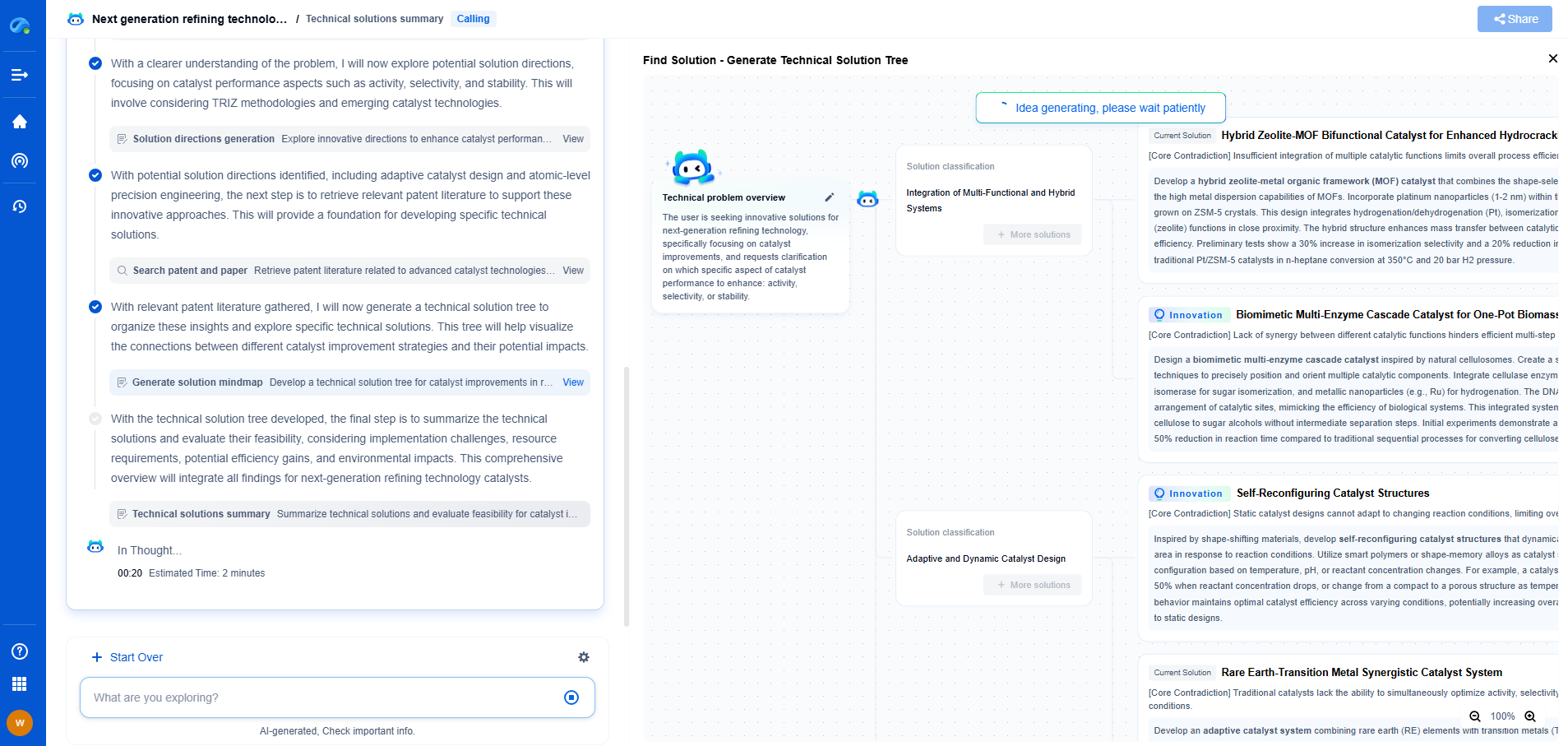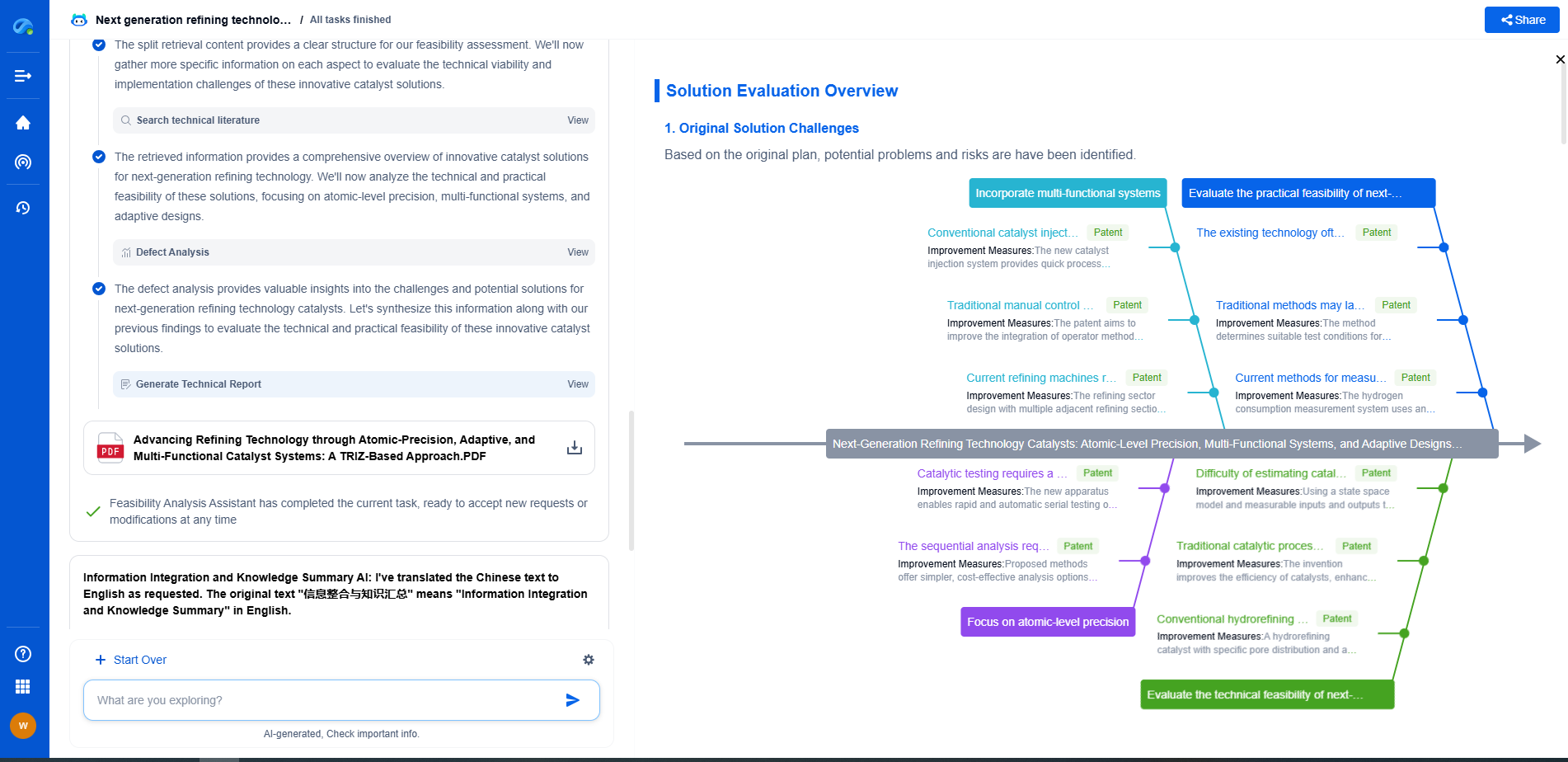What Is Predictive Maintenance in Pipeline Operations?
JUN 20, 2025 |
Understanding Predictive Maintenance
Predictive maintenance is a proactive maintenance strategy that utilizes advanced data analytics, machine learning, and Internet of Things (IoT) technologies to predict when equipment is likely to fail. Unlike traditional maintenance practices, which are either reactive (fixing equipment after it breaks) or preventive (scheduled maintenance irrespective of the actual equipment condition), predictive maintenance aims to optimize maintenance schedules based on the actual condition of the equipment.
Why Predictive Maintenance Matters in Pipeline Operations
Pipeline operations are critical for transporting vital resources such as oil, gas, and water over long distances. Any disruption can lead to significant economic losses and environmental damage. Predictive maintenance provides several advantages in this context:
1. Cost Efficiency: By only performing maintenance when necessary, companies can significantly reduce labor and material costs associated with unnecessary routine maintenance.
2. Minimizing Downtime: Predictive maintenance enables the detection of potential issues before they result in equipment failure, thus minimizing unscheduled downtime.
3. Safety Enhancement: Early detection of pipeline issues can prevent catastrophic failures, ensuring the safety of both the environment and personnel.
4. Asset Longevity: Regular monitoring and maintenance based on actual equipment condition enhance the lifespan of pipeline components, leading to better asset management.
Key Technologies in Predictive Maintenance
The implementation of predictive maintenance in pipeline operations involves the integration of several key technologies:
1. Sensors and IoT Devices: These are deployed along the pipeline to continuously collect data on various parameters such as temperature, pressure, and flow rate.
2. Data Analytics: Advanced analytics tools process the vast amounts of data collected, identifying patterns and anomalies that could indicate potential failures.
3. Machine Learning: Machine learning algorithms learn from historical data to improve the accuracy of predictions over time, enabling more precise maintenance scheduling.
4. Cloud Computing: Cloud platforms provide scalable storage and processing power, facilitating real-time data analysis and decision-making.
Challenges in Implementing Predictive Maintenance
While predictive maintenance offers numerous benefits, its implementation is not without challenges:
1. Data Management: The sheer volume of data generated by sensors and IoT devices can be overwhelming. Efficient data management systems are essential to filter, store, and analyze relevant data.
2. Integration Complexity: Integrating predictive maintenance systems with existing pipeline operations can be complex, requiring significant investment in technology and training.
3. Accuracy of Predictions: The success of predictive maintenance largely depends on the accuracy of the predictions. Continuous improvement of algorithms and models is necessary to reduce false positives and negatives.
4. Cost: Initial setup costs for predictive maintenance systems can be high, making it a significant investment for companies.
Conclusion
Predictive maintenance in pipeline operations is a game-changing approach that significantly improves operational efficiency and reduces costs. By harnessing the power of advanced technologies such as IoT, data analytics, and machine learning, companies can not only enhance the reliability and safety of their pipeline systems but also gain a competitive edge in the industry. However, successful implementation requires overcoming challenges related to data management, system integration, and cost. As technology continues to evolve, the role of predictive maintenance in pipeline operations is set to become even more pivotal, paving the way for more sustainable and efficient resource management.
Transform the Way You Innovate in Pipeline Technology—with AI-Powered Intelligence
From corrosion-resistant materials to smart monitoring systems and advanced flow control mechanisms, the pipeline industry is undergoing rapid technological transformation. Yet keeping up with evolving engineering solutions, regulatory landscapes, and competitive patents can be a major bottleneck for R&D and IP teams.
Patsnap Eureka is your AI-powered research companion—built specifically for professionals in high-tech and infrastructure domains like pipeline technology. Whether you're designing high-pressure transport systems, assessing trenchless installation innovations, or safeguarding proprietary flow assurance solutions, Eureka provides real-time insights into global patent trends, emerging technologies, and R&D intelligence—all in one intuitive interface.
Empower your team to innovate faster, reduce technical blind spots, and stay ahead of industry shifts. Discover Patsnap Eureka today and bring clarity and confidence to your pipeline technology decisions.
- R&D
- Intellectual Property
- Life Sciences
- Materials
- Tech Scout
- Unparalleled Data Quality
- Higher Quality Content
- 60% Fewer Hallucinations
Browse by: Latest US Patents, China's latest patents, Technical Efficacy Thesaurus, Application Domain, Technology Topic, Popular Technical Reports.
© 2025 PatSnap. All rights reserved.Legal|Privacy policy|Modern Slavery Act Transparency Statement|Sitemap|About US| Contact US: help@patsnap.com

